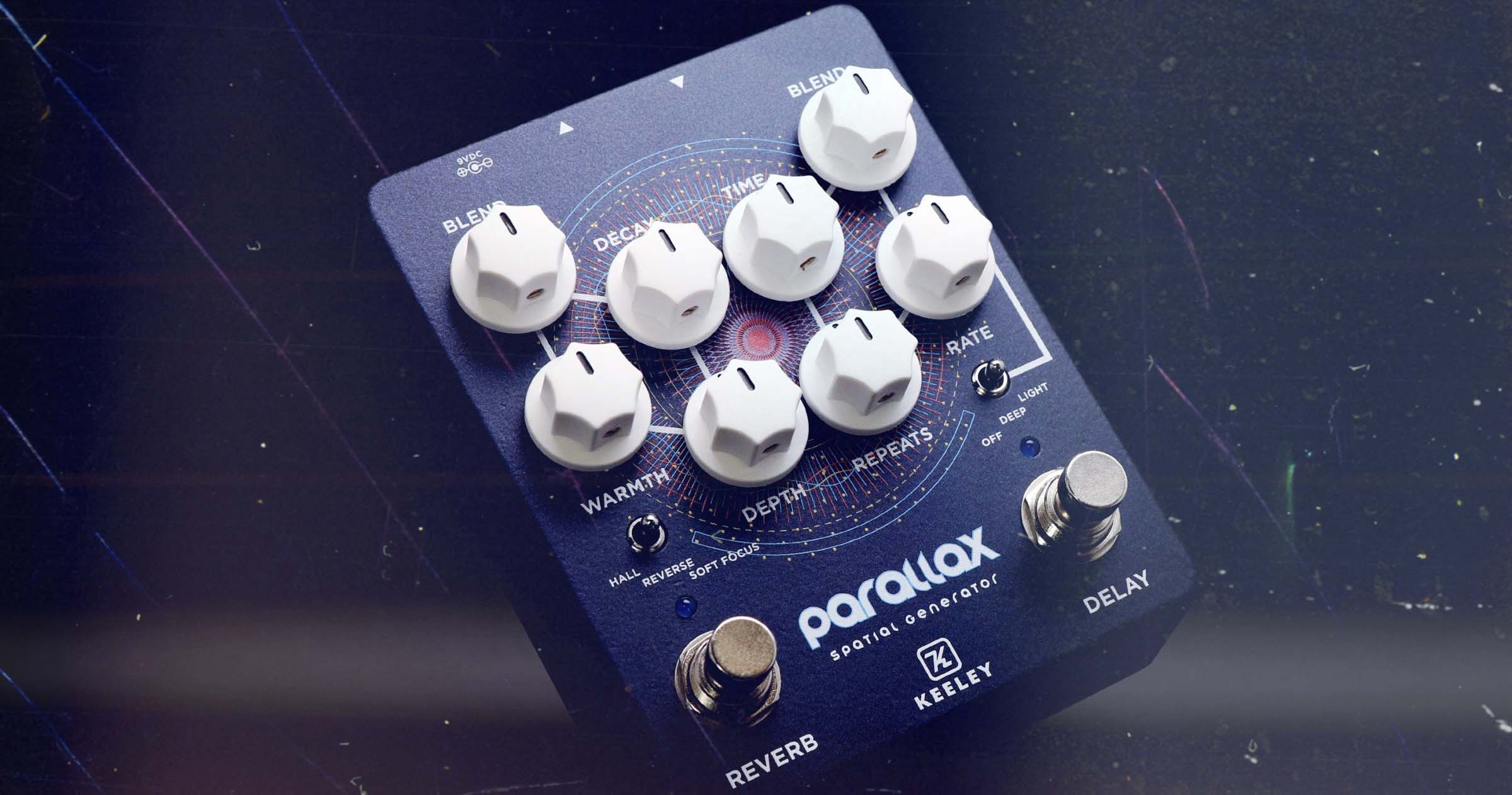Keeley Electronics combines its Caverns modulated delay with the Realizer’s shoegaze-friendly reverb for the Parallax Spatial Generator
This all-in-one solution for astral ambience presents three delay types and three reverbs and the power to run them together for super-heady sound

Reverb and delay pedals are essential items for any player’s pedalboard but there are those who will need a twofer guitar effects pedal that offers a little more ambience for those occasions when it has come time to shoegaze into the abyss, and the new Parallax Spatial Generator from Keeley Electronics is exactly that.
It jams together three delays from its Caverns delay and three from its Realizer reverb pedal for a pedal that is pitched for the experimental players for whom the wet splash of plate is just too vanilla for the music they’re making.
The three reverb algorithms and the original hardware that inspired them should tell you everything you need to know about the the sort of demographic the Parallax is catering to. Each of the reverbs is selectable via a three-way toggle switch, with the dials for Decay, Warmth and Depth controlling each sound in its own unique way.
First up you’ve got Soft Focus, which was inspired by the venerable Yamaha FX500 rackmounted unit, the so-called ‘shoegaze machine’ from the ‘80s popularised by Slowdive and My Bloody Valentine – it's a sound you can also find on Catalinbread's recently launched X40 Soft Focus Reverb.
In this mode, adjust the Decay dial for the reverb’s decay and the feedback when in dual-delay mode, while Depth controls a the depth of the pedal’s chorus voices.

Reverse is as the name suggests, a reverse reverb, and as above it too takes inspiration from vintage units, with the sounds here inspired by the Yamaha SPX90 and Alesis Midiverb II. In this mode, Decay adjusts the delay time from 150ms to a half-second. There is also a dynamic dimension to the Reverse algorithm, with a envelope triggered vibrato emulating a whammy bar.
Set the Depth control to adjust the pitch as though you were working an electric guitar’s vibrato. And kudos to Keeley for being so exacting about this; it isn’t just any vibrato unit, but a Jazzmaster’s. That makes perfect sense then that the Warmth dial in Reverse mode acts like the rhythm pickup control on a Jazzmaster.
Want all the hottest music and gear news, reviews, deals, features and more, direct to your inbox? Sign up here.
Finally, Hall is described as a hall reverb with some extra octave-up shimmer on top. This setting takes the output of the reverb and sends it back through an octaver and then back again for “an infinitely ascending octave feedback loop”. Simply adjust the Depth control to taste.
Moving on to the delay side of the pedal, where once more the modes are selectable via toggle switch and a trio of dials for Time, Rates and Repeats. Here you can choose from an unmodulated delay, a Deep setting in which the modulation is full-on, or Light for more subtle movement on your repeats.
Both sides of the pedal have their own Blend dial for wet/dry mix and their own footswitch. Jacks and the input for the pedalboard power supply (this takes 9V and draws over 75mA) are mounted on the top of the enclosure.
The pedal has an internal dip switch to activate a TRS input for sending the reverb and delay independently through another effects chain or to a guitar amp, and another for switchable bypass so you can have those reverb tails hanging around.
The Parallax Spatial Generator is available now, priced £229 / $219. See Keeley Electronics for more information, and check out the demo videos for a taste of what it can do.
Jonathan Horsley has been writing about guitars and guitar culture since 2005, playing them since 1990, and regularly contributes to MusicRadar, Total Guitar and Guitar World. He uses Jazz III nylon picks, 10s during the week, 9s at the weekend, and shamefully still struggles with rhythm figure one of Van Halen’s Panama.
